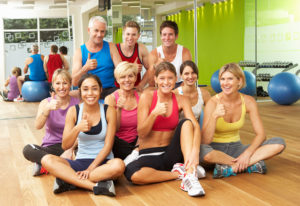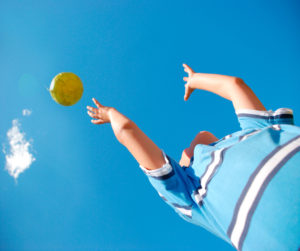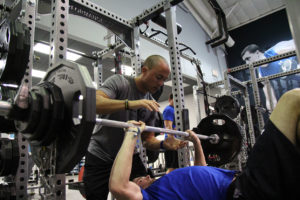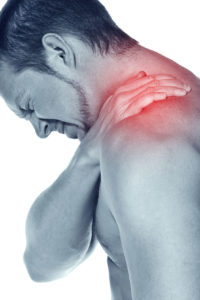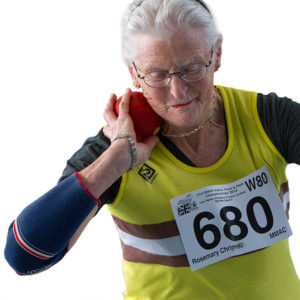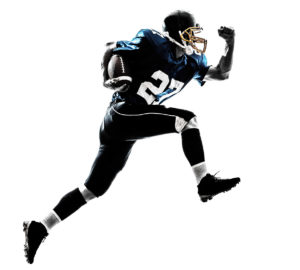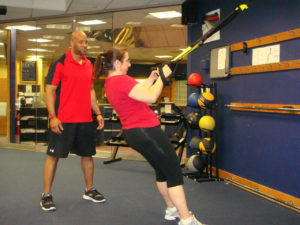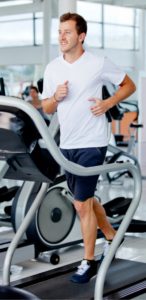Athletes
Researchers Warn Seniors: Avoid High-Intensity Exercise
High-intensity exercise is all the rage these days. But for some—particularly, older adults—too much intensity may do more harm than good, warns a new study.
The study’s primary purpose was to understand the effects of various forms of leisure-time physical activity on the cardiovascular health and mortality rates of older adults. To determine these effects, researchers studied the records of 3,298 individuals. Their average age at enrollment was 69, and the median follow-up period was 17 years.
Sample Class: HIIT Remix
If your members enjoy amazing results from HIIT workouts but crave a more gentle approach to burning calories, HIIT Remix is the solution. This class takes the results-focused challenge of a traditional high-intensity conditioning class and presents it in mellow, low-impact versions of favorite interval drills. Participants will appreciate the change of pace and the opportunity to cross-train. HIIT Remix Details
How to Help Golfers Improve Scores, Boost Performance, and Prevent Injuries
The key to understand the biomechanics of body rotation.
Training the 5 Types of Fitness Clients
approved quiz 2: Page 92 Most fitness professionals tailor their programming
to five kinds of clients, who have five distinct training goals.Reviewing
the client types and their specific workout needs is helpful because it
illustrates a divergence between what most trainers like to do and what
most clients actually want. If we’re honest with ourselves as an industry,
it’s probably true that we most readily identify with athletes,
bodybuilders and people trying to lose weight, while our clients are most
Physical Literacy for Kids
Health and fitness professionals are important players in a nationwide movement to promote and support physical literacy, which in turn will help to set the stage for a healthier, more active, more productive generation of children
hey’re doing either too little or too much.
For U.S. youth, that’s the stark paradox of physical activity. While
more than half of adolescents fail to accumulate the recommended 60
minutes of exercise at least 5 days per week (CDC 2015), many young
athletes are becoming specialized too early in life, which fosters a
culture of elite sports that discourages broad participation.
Profiles of Pain and Perseverance
In February 2006, Danny Strong was on top of the world. After years of working as a gym manager, he had opened his own personal training gym, making his dream a reality. The husband and father was also eager to welcome a second child into the family. A month after receiving the keys to his new facility, he took his family on a trip to visit his godmother. While on the road, Strong lost control of his vehicle and was hit by a tractor-trailer traveling at full speed. His pregnant wife, Sandra Urbano Strong, was killed instantly.
How To Work With Teen Athletes
Working with a group of teen athletes can be a frustrating experience—but it doesn’t have to be. Justin Russ, CSCS, a strength and conditioning coach at IMG Academy in Bradenton, Florida, offers his top insights on successful team training:
Set the tone. Establish expectations and procedures early. Be sure the teens are aware that you are the coach and they are the athletes, and their job is to listen to what you say.
The Team Dynamic
Passion. A typical day for Justin Russ involves wrangling 30–50 high-school athletes through their daily condition- ing training. The athletes attend IMG Academy, where they undergo rigorous athletic and scholastic programs. Russ is a strength and conditioning coach responsi- ble for the development and implementa- tion of conditioning training to improve each athlete’s physical capacity and mini- mize injury risk.
Playing Hurt
When Gray Cook was a high-school athlete, his coaches would comment, “That Gray Cook sure can play hurt.” He had over 20 fractures before he was 18, what with his love of football and motorcycles. He played while hurt, he says, because he had the ability to block out pain. Flash forward to 2014, and Cook—now a practicing physical therapist, certified orthopedic specialist and founder of Functional Movement Systems in Chatham, Virginia—was no longer able to block out neck pain. It was affecting his life, his work, and his ability to share his message of fitness and health.
Does Exercise Order Really Matter in Resistance Training?
Research on resistance training design finds that the chief variables include intensity, volume, recovery between sets and exercises, workout frequency, equipment and speed of movement (Sima?o et al. 2012).
Secrets of the Masters Athlete
The world of athletics is considered the territory of young people; sports news headlines are littered with 20-somethings making waves in their competition of choice. Once they’ve reached their prime, retirement is often considered the next step. However, there is a sub- set of competitors who buck the norm and refuse to hang up their sneakers and race bibs. Known as masters athletes, these inspiring individuals choose not to age quietly. ThThe six athletes featured in this article are world champions and record holders—and they are proof positive that age is simply a number.
The Danger of Sports Specialization
Many young athletes dream of earning a scholarship to play their sport of choice at a reputable college or university. To realize that dream, they will often train extensively. Recent research found that hard training while young may lead to significant physical problems later in life.
Performance Training for Masters Athletes
Speak with enough personal trainers at the start of their careers and you’ll quickly notice a common aspiration: They want to train professional athletes. Of course it’s fine to dream big, but it’s important to remember that professional athletes are extremely rare individuals. Consequently, pro athletes are neither as numerous nor as varied in age, gender or ability as everyday adult athletes.
Sleep: The Athlete’s Steroid
“People say, ‘I’m going to sleep now,’ as if it were nothing,” said comedian George Carlin. “But it’s really a bizarre activity. For the next several hours, while the sun is gone, I’m going to become unconscious, temporarily losing command over everything I know and understand. When the sun returns, I will resume my life.”
Restoring the Injured Athlete
client: Dana | personal trainer: Michael Piercy, owner, The Lab | location: West Caldwell, New Jersey
Injury. When Michael Piercy, owner of The Lab (Performance & Sports Science), first met Dana in the summer of 2008, she presented with a rare condition described by doctors as “functional movement disorder.” According to The Lancet Neurology (2012; 11 [3], 250–60), functional movement disorders are included in a wide spectrum of neurological disorders and are difficult to both diagnose and treat.
Preseason Fitness Unrelated to Injury Prevention?
Athletes typically train during the offseason to improve their performance and reduce their injury potential during the regular season. However, the results of a study from Sports Medicine, Arthroscopy, Rehabilitation, Therapy & Technology (2012; doi:10.1186/1758-2555-4-26) suggest that preseason fitness levels may be unrelated to the potential for injury during the regular season.
“Why is tapering important before competition? How do you help clients taper their workouts during this time?”
Tapering before a big event (such as a marathon, century or long-distance triathlon) gives the body a chance to rest so athletes can be at their absolute best on race…
Treadmill Training: Weighing the Pluses and Minuses
Over 40 million people use treadmills regularly in the United States. Their reasons range from losing weight to improving cardiovascular fitness and on up the spectrum to training for competitive distance running.
Giving Back to Research: Is Your Sport Really You?
Get some neat tools for your fitness career by helping us research the question, “Does your sport match your personality?” We have been studying this topic for a few decades and want to update our understanding. Follow the link below and complete a 10- to 15-minute questionnaire on the seven dimensions of exercise. In return we will send you a review article and template you can use in your practice. The survey is anonymous, and it will help us all know more about the science of fitness.



